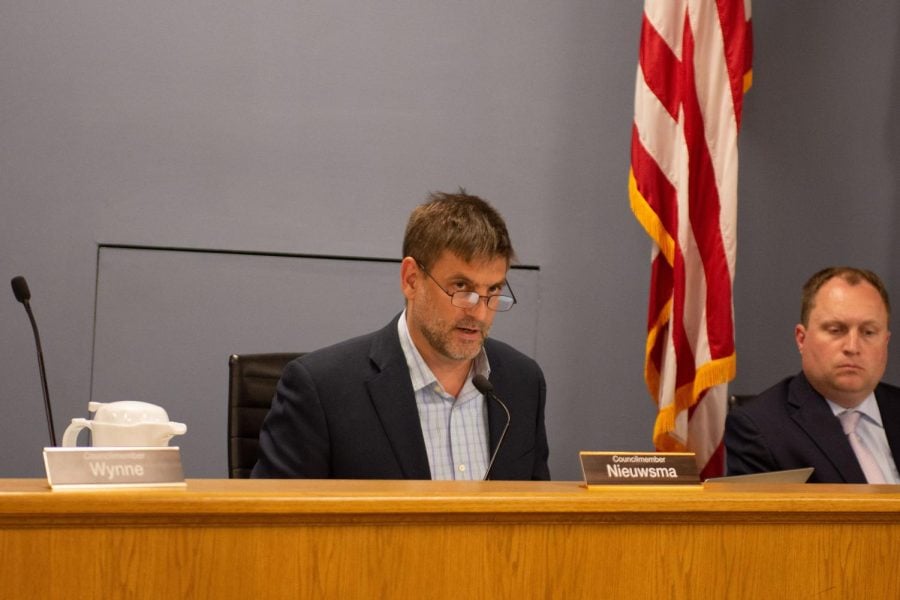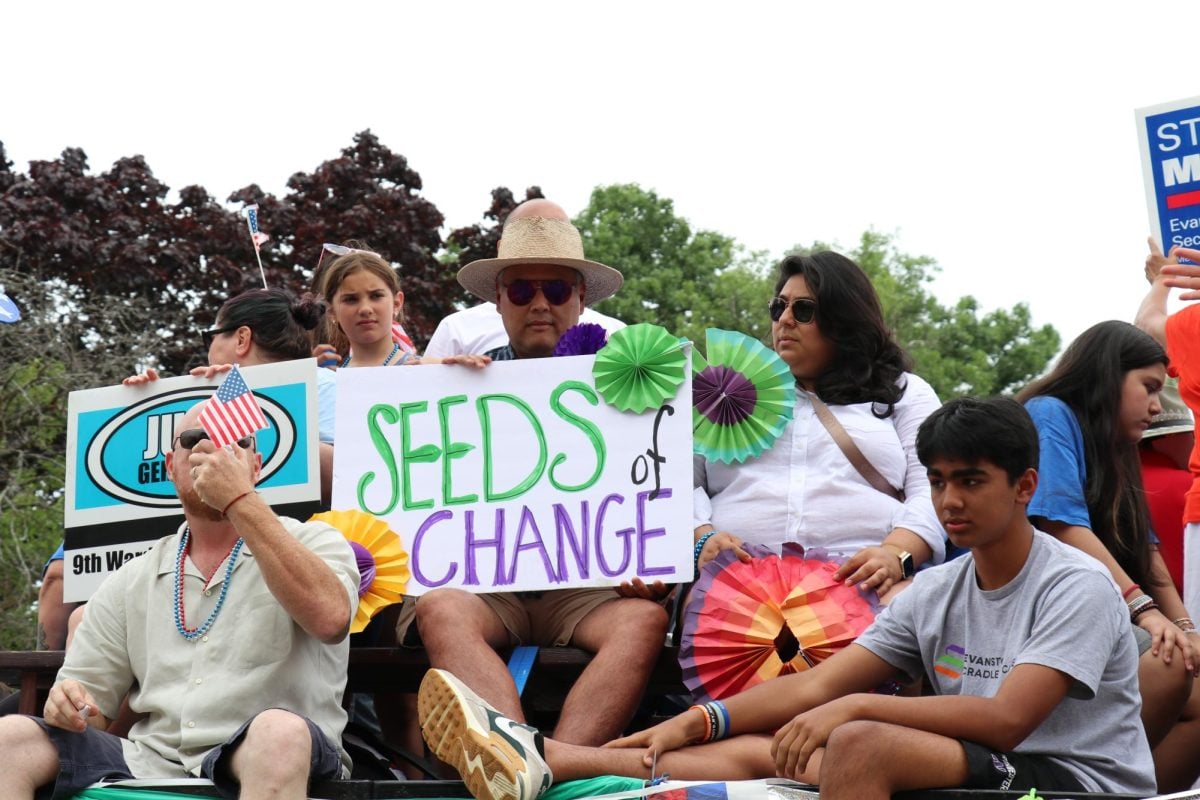Defining Safe: The Broader Scope of the Bursar’s Office Takeover
May 22, 2023
It’s been almost three weeks since the 55th anniversary of the Bursar’s Office Takeover, but what can the event still tell us about the larger scope of student protest? The Daily takes a look at a variety of student protest events of the 1960s and early 1970s, tying together the common threads.
PAUL O’CONNOR: From Columbia University in New York City to San Francisco State University in California, Northwestern was just one of many epicenters of student protest in the ’60s. What tied these movements together?
[music]
PAUL O’CONNOR: From The Daily Northwestern, I’m Paul O’Connor. This is Defining Safe, a podcast looking at the intersection of identity and student life at Northwestern.
[music]
PAUL O’CONNOR: On May 3, Northwestern commemorated the 55th anniversary of the takeover of the Bursar’s Office. The event saw over 100 students peacefully occupy the Bursar’s Office in response to unequal treatment of Black students in University policies surrounding housing, financial aid and academics.
MARTHA BIONDI: They were looking at questions of housing, the curriculum, dormitories, faculty hiring, cultural and social activities on campus, and they were really examining every aspect of student life … They were bringing a robust racial justice vision.
PAUL O’CONNOR: That was African American studies and history Prof. Martha Biondi. Biondi authored the book “The Black Revolution on Campus,” which traces the history of Black student activism and social movements across the ’60s and early 1970s.
PAUL O’CONNOR: She says the student activists involved in the Bursar’s Office Takeover were partly galvanized by the political and social turbulence of 1968.
MARTHA BIONDI: I think the assassination of Dr. Martin Luther King in April 1968 was a kind of stunning and grievous event that really impacted young people and pushed them to, I would say, a new chapter in the movement’s history.
MARTHA BIONDI: When Dr. King was assassinated, I think one message of that was students felt like, “Oh, here’s this apostle of nonviolence, you know, get killed.” It just made them sad and angry, but also made them feel like they had to sort of intensify their tactics. And they had to sort of pose more of a challenge to institutions. And I think what you saw nationwide is students really engaged in more confrontational tactics. Like, they went on strike, they engaged in sit-ins, they took over buildings, they blocked traffic, that kind of thing.
PAUL O’CONNOR: Protests on campus against institutional racism coincided with protests against the Vietnam War, which lasted into the 1970s. Here’s Kevin Leonard, (Weinberg ’77, ’82) a University archivist for Northwestern. Here’s how he described the atmosphere in the country during the late ’70s:
KEVIN LEONARD: The 1960s, this is a very restive time not only in the United States, but around the world. You have context of the Vietnam War, you have context of an impending presidential election, you have context of the Memphis Sanitation (Workers’) Strike.
KEVIN LEONARD: There was opposition to allowing course credits for military training programs. There, periodically, were demonstrations against the presence of corporations doing hiring on campus if those corporations had been somehow tied to the war effort.
PAUL O’CONNOR: While alumni involved in the Bursar’s Office Takeover say the 38-hour protest was intense, contact between students and the administration never became violent. The University elected instead to negotiate with the students in a series of provisions collectively known as the “May 4th Agreement.” Among other things, the administration agreed to increase enrollment rates for Black students, work to provide financial aid packages and create identity-based housing and communal spaces.
PAUL O’CONNOR: However, student protests at other college campuses did not produce the same type of negotiations. Just a few days before the Bursar’s Office Takeover in Evanston, over 700 students were arrested and over 100 were injured by police after student activists at Columbia University occupied a campus building. The occupation was in response to university plans to expand further into the neighborhood of West Harlem to construct a new gymnasium.
PAUL O’CONNOR: And, six months after the Bursar’s Takeover, the longest-ever student strike in higher education in history occurred at San Francisco State University. Spearheaded by student activist organizations on campus, the strike lasted five months, with police arresting and injuring hundreds.
MARTHA BIONDI: I think that the police were called in a lot, and often in public institutions that were in states with conservative governors. For example, in California, the governor at the time was Ronald Reagan, who, you know, rose to political prominence on “law and order” platforms.
PAUL O’CONNOR: Dr. Sundiata Keita Cha-Jua teaches in the departments of African American Studies and History at the University of Illinois Urbana-Champaign. He offered more insight into the involvement of police in student protests.
SUNDIATA KEITA CHA-JUA: It’s not so much students and their tactics, because I think you can find places where a student brought guns on the campus but the police weren’t called. You can find places where the student didn’t bring guns on campus and the police were called. So I think it had more to do with the particular administration, the president, the chancellor, the board of trustees, in terms of their reaction. As a student, I, of course, participated in student protests. We took over some classrooms, and those things turned on whose classroom you took over.
SUNDIATA KEITA CHA-JUA: So I think it’s always going to be a dialectic between how those in power respond to the initial tactics of movement activists.
PAUL O’CONNOR: While many often mistake the civil rights movement as the key motivation for activism on college campuses at the time, Cha-Jua distinguishes the Black Power movement as the primary source of inspiration for student activists.
SUNDIATA KEITA CHA-JUA: The big distinction with Black Power is that Black Power is for, in some degree, structural access. But largely, Black Power is a call to build independent Black institutions and for Black people to gain control and take control of the U.S. public institutions that function in their community.
SUNDIATA KEITA CHA-JUA: So even though from that extent you could say that it’s about being allowed to enter those structures, but it’s talking about controlling those structures -– not just being brought in, but taking control.
SUNDIATA KEITA CHA-JUA: You can look at their dress … berets, black jackets. You can look at and listen to the rhetoric. The rhetoric mirrors the Black Power movement.
PAUL O’CONNOR: Cha-Jua says these student activists weren’t necessarily trying to fix or adjust the university system; rather, they were trying to construct something that adequately accommodated their demands. A major target, then, became the development of Black studies programs.
SUNDIATA KEITA CHA-JUA: We want Black studies. We want a full array of courses, a full curriculum that explores experiences of Black folk in every discipline. And we want to see the creation of an idea in which these disciplines are brought together in a way that something new emerges.
PAUL O’CONNOR: Biondi says this demand was at the heart of the Bursar’s Office Takeover as well as other student protests across the country.
MARTHA BIONDI: In some ways, you can think of it as going beyond what we might think of as a kind of simple process of desegregation or integration, and calling for, you know, a rejection of a eurocentric curriculum and a kind of white liberal colorblindness that sort of didn’t acknowledge or recognize Black cultural contributions to American life.
[music]
PAUL O’CONNOR: Be sure to check out the rest of our content for the 55th anniversary of the Bursar’s Office Takeover. Pick up a physical copy of The Daily or visit dailynorthwestern.com to read our reporting on efforts to revive the 1968 demands, what an upcoming Supreme Court ruling could mean for NU admissions and more.
PAUL O’CONNOR: From The Daily Northwestern, I’m Paul O’Connor. Thanks for listening to another episode of Defining Safe. This episode was reported and produced by me. The audio editor of The Daily Northwestern is Mika Ellison, the digital managing editors are Ava Mandoli and Erica Schmitt and the editor in chief is Alex Perry. Make sure to subscribe to The Daily Northwestern’s podcasts on Spotify, Apple Podcasts or SoundCloud to hear more episodes like this.
Email: [email protected]
Twitter: @stallthepaul
Related Stories:
— Protesters demonstrate against on-campus policing, present Black student demands at The Rock
— Statement addressed to NU administration demands recognition and empowerment of Black students
— Alumna Kathryn Ogletree speaks about Bursar’s Office Takeover experience












